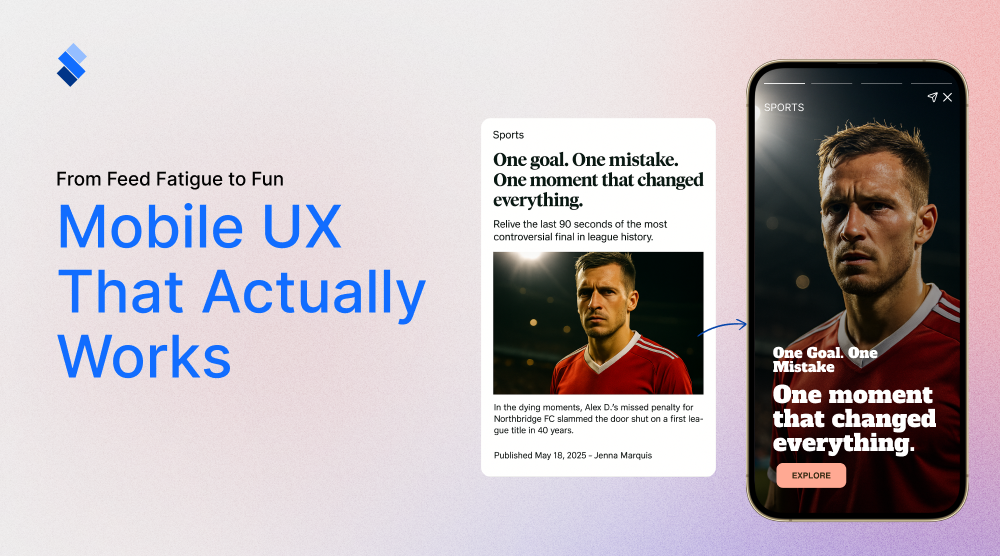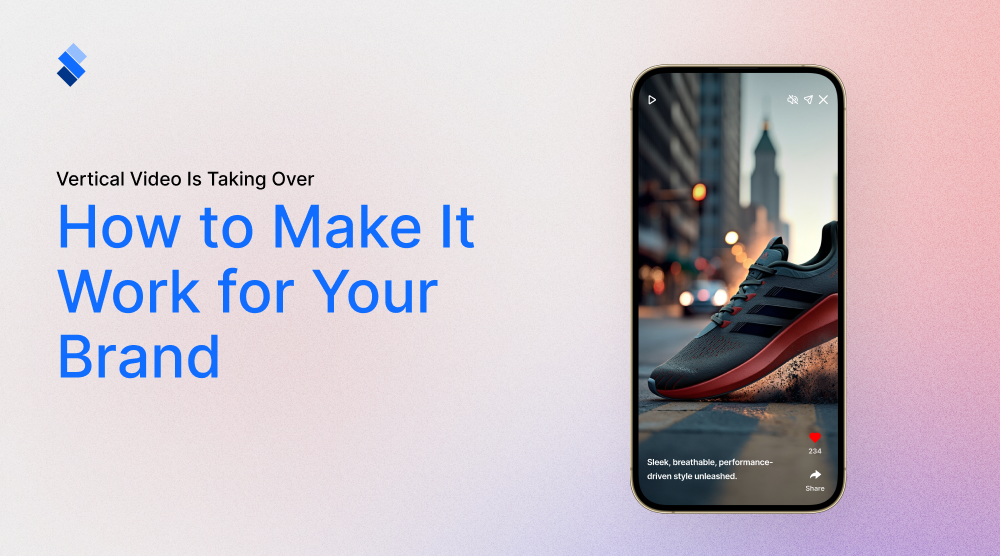AI-Generated Videos: Hype or the New Content Engine?
Are AI-generated videos just hype or your next content engine? Explore how to leverage AI for scalable short-form video, repurpose content, and maintain ethical standards. See how StorifyMe can transform your strategy with a free demo.
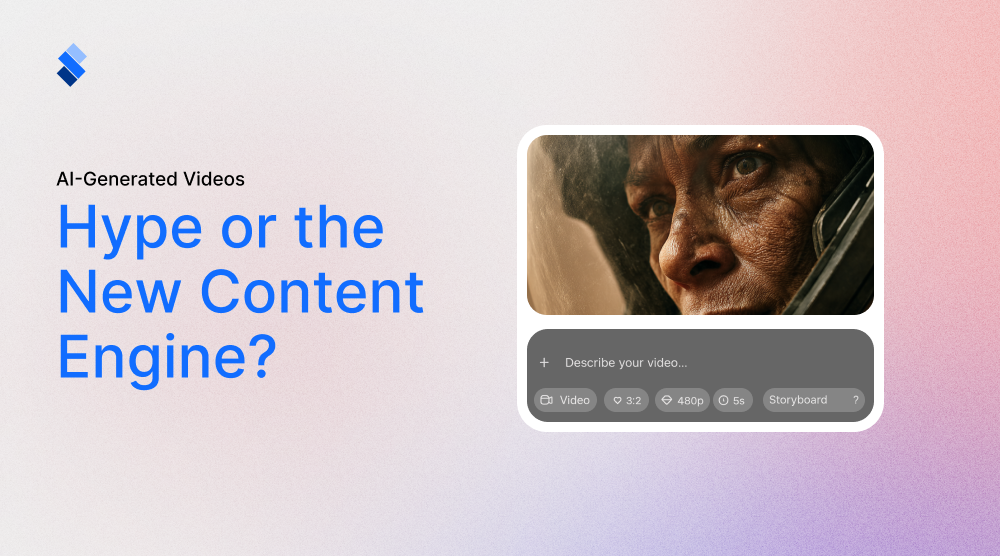
When it comes to modern marketing, few things hold as much promise as AI-generated videos. On the one hand, modern marketing content revolves around video, where Story content yields tremendous conversion rates, and platforms like TikTok continue to dominate. On the other hand, we are experiencing the dawn of AI-generated content where scale, cost, and general quality are all developing. So, a high demand for a certain type of content, and an engine that promises to create that content quickly, cheaply, and apparently without loss of quality. Are AI-generated videos the new content engine, or are they simply a passing hype? Well, let’s find out.
What makes video content different
As is well known, generative AI is quite widespread in news and media. Images, sounds, text… All these are easily made with the help of AI. More robust and specialized AI tools can create entire websites or apps with a couple of prompts. So why is the generation of videos such a hot topic?
Dominance of video content
We first have to understand how widespread video content is. On platforms like YouTube, users now watch over a billion hours of video daily. On Facebook, videos generate 59% more engagement than static photo posts. If you incorporate a video on your landing page, you can increase conversion rates by over 80%, while including a video in an email boosts click-through rates by as much as 300%. Furthermore, an incredible 93% of brands gained a new customer directly as a result of a video on social media, proving its direct line to revenue generation and audience growth. With all this in mind, brand managers are highly motivated to find new and engaging ways to use video content in their everyday feed.

Design process
Secondly, we have to appreciate that ought of all content, videos are hardest to create. It might seem easy to simply film a short video with your phone, post it on your platform and call it a day. But, in practise, preproduction will take up 30-40% of your time (script writing, storyboarding, location scouting, etc.). While postproduction will take up as much as 40-50% of your time (editing, color grading, sound design, etc.) When you consider all this work it suddenly becomes obvious why videos weren’t so prevelent before. And why having a tool that can automise most, if not all of this work is so potent.
How do AI tools help with video generation?
The term “AI-generated videos” can entail a lot of things. It can range from videos that were fully made by AI simply through text prompts. In most cases, this is what people think when we say AI-generated videos. But, they can also entail a far more supplementary role, where AI was simply used to enhance certain aspects of a previously man-made video. With that in mind, we should outline how people most often use AI in video generation, and how you can make the most from it.
The trouble with fully AI-generated videos
Relying solely on AI for all marketing videos is a risky strategy because the technology lacks the human touch. It cannot genuinely feel emotions, understand subtle cultural nuances, or build real trust with an audience. While AI is a powerful tool for creating content quickly, a brand's authentic story, unique personality, and core values come from human experience and intuition. Without this human guidance, an AI-only approach can easily lead to generic, repetitive, or even tone-deaf content. Such content will not only fail to create a meaningful connection with people but ultimately make the brand feel impersonal and untrustworthy.

Making the most out of them
So, does this mean that you should only use AI in a suplemental role? Well, not quite. By using the right video generation tools and ample planning, you can yield terrific results from AI-generated videos. Especially if you have a good idea of how your video-generation engine will behave.
Building a strategic content engine
The most effective use of AI video generation is not for one-off projects but for building a scalable content engine. This begins with a long-term strategy, not a prompt. Before generating a single frame, you must define your core narrative, target audience, and campaign goals. Use this strategy to create a "content pillar" framework (a set of central themes and key messages). This framework ought to be your strategic blueprint that guides all AI prompts, ensuring every piece of generated content, from a short clip to a longer story, serves a purpose and reinforces your brand's unique voice. This goes a long way in avoiding the common pitfall of creating random, disconnected videos that lack strategic impact.
Mastering scalable short-form content
For scalable short-form content like social media shorts, AI is unparalleled for rapid ideation and versioning. To levarage this, you can start by using your content pillars to brainstorm dozens of prompt variations for specific platforms. The power lies in repurposing a single successful concept; you can use AI to instantly regenerate a top-performing video in different aspect ratios, languages, or with slight stylistic tweaks to test what resonates best. The critical pitfall to avoid here is generic output. To combat this, your prompts must be infused with specific brand differentiators. For instance, you can mention your unique brand colors, a recognizable aesthetic, or a recurring character. That way you will ensure that your content is instantly identifiable and doesn't blend into the homogenous sea of AI-generated visuals.
Crafting longer narratives
While more complex, AI can also assemble longer, narrative-driven story content by working in a modular fashion. In simple terms, instead of generating one long video, break the narrative into discrete scenes or beats that fit within a single Story. Generate each scene individually with detailed prompts that maintain visual and tonal consistency, then use AI-powered editing tools to seamlessly stitch them together with transitions, a consistent voiceover, and a unified soundtrack. This approach prevents the jarring inconsistencies that often plague longer AI videos. The key to success is maintaining rigorous human oversight as the editorial director, ensuring the emotional arc of the story remains compelling and that the final product feels like a cohesive journey rather than a series of disconnected clips.
Repurposing old content
A powerful application of AI video generation is the automated repurposing of existing content, such as blog posts, articles, and long-form YouTube videos. With proper use, you can repurpose these into engaging vertical shorts. For instance, a brand can feed an AI tool the transcript from a popular YouTube tutorial, and the AI can automatically identify the key moments, generate corresponding visuals based on the spoken content, and reformat the entire sequence into a vertical aspect ratio complete with animated subtitles and a dynamic background.
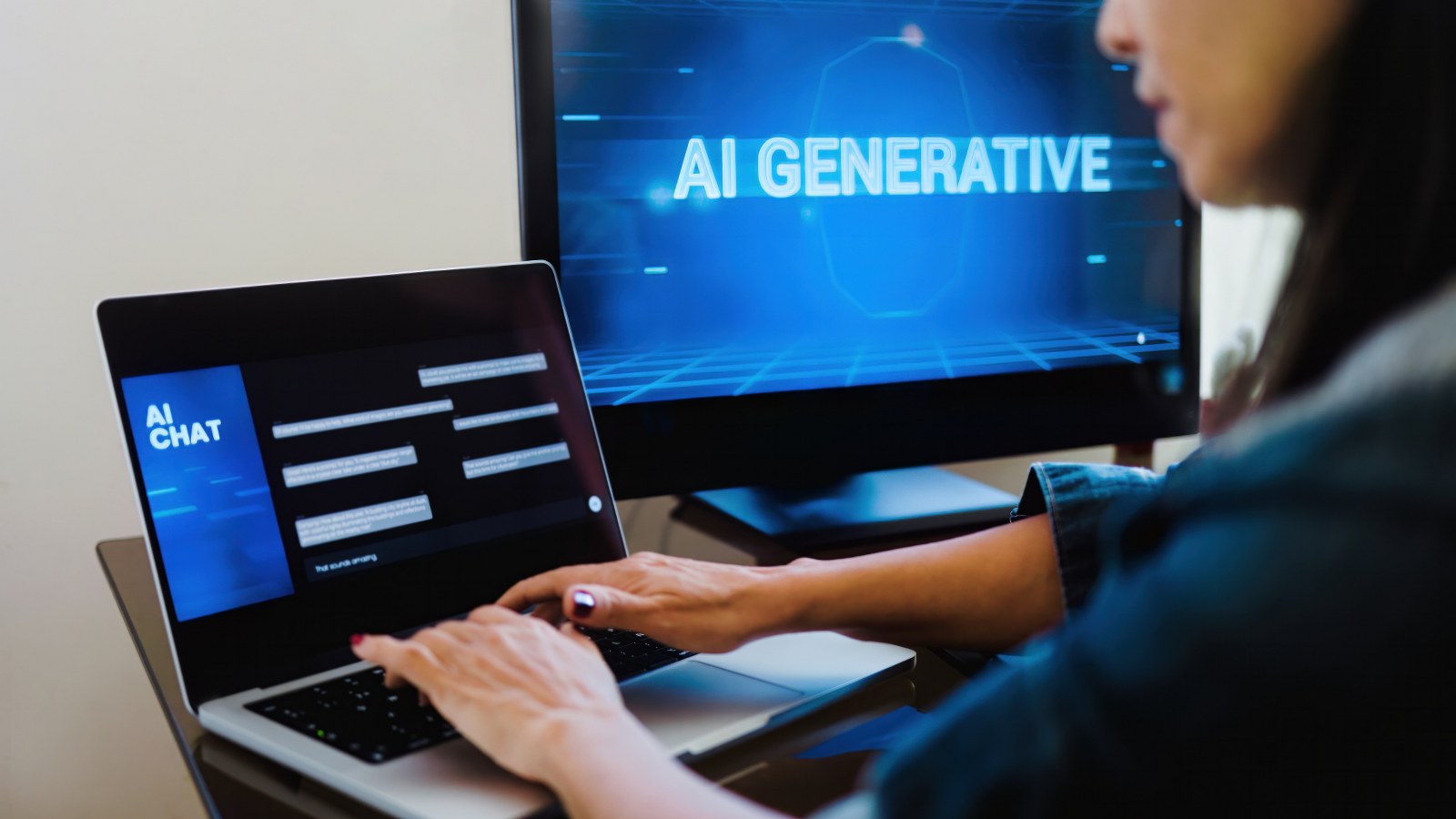
Similarly, a dense article or blog post can be distilled into its core points, with AI creating a series of short, visually compelling videos that highlight each key statistic or quote. Doing so effectively breathes new life into old content and extracting maximum value from a single piece of foundational work.
Supplementing video creation with AI
If you do chose to use AI in a more suplemental role, you might want to explore which role you’d like AI to fill. From pre-production to post-production, AI can go a long way in reducing production costs and shortening the required time.
Pre-Production
In pre-production, AI acts as a powerful creative and logistical partner to compress timelines that are traditionally heavy with manual labor. Writers and directors can use AI to rapidly generate and iterate on script drafts, plot outlines, and dialogue variations, moving from a blank page to a solid foundation in hours instead of days. This is arguably the best use of AI, regardless of the content type. Furthermore, AI-powered tools can analyze scripts to automatically generate preliminary shooting schedules and budgets, identifying potential logistical conflicts or cost overruns before they occur. This proactive planning prevents expensive delays during filming, directly reducing overall production costs by fostering a more efficient and foresightful pre-production process.
Production
During the production phase, AI's role is to safeguard the shoot's resources, namely time and money, by ensuring what is captured is technically flawless. Real-time AI monitoring of footage can instantly alert the crew to issues like an actor moving out of focus, poor audio levels, or a breach of continuity, such as a prop being misplaced between shots. Catching these errors on the spot eliminates the need for costly reshoots later. This supplemental guidance allows the human crew to operate with greater confidence and speed, ensuring that the limited and expensive time on set is used to capture the best possible performances without technical setbacks.
Post-Production
Post-production is where AI delivers the most dramatic time and cost savings by automating tedious, manual tasks. Editors can use AI to instantly log and transcribe hours of raw footage, creating a searchable database of clips and dialogue that cuts down the initial review process from days to hours. Similarly, AI can handle time-consuming jobs like rotoscoping for visual effects, applying initial color correction across a scene, or cleaning up background noise in audio tracks. By automating these foundational but labor-intensive tasks, AI frees up human editors and artists to focus their expertise on the creative high-value work that defines the final product's quality and impact.
The ethical use of AI-generated videos
Seeing that AI content generation engines are still a developing techology with many dangers, we feel it necessary to mention certain concerns. If you choose to generate videos of your own, we do hope that you will keep these in mind.
The imperative of transparency and human oversight
The ethical use of AI-generated video begins with a commitment to transparency and human oversight. Publishers have a responsibility to their audience to be clear about the origin of their content, especially when it is wholly or partially created by AI. This means proactively labeling AI-generated videos to maintain trust and avoid deceiving viewers.
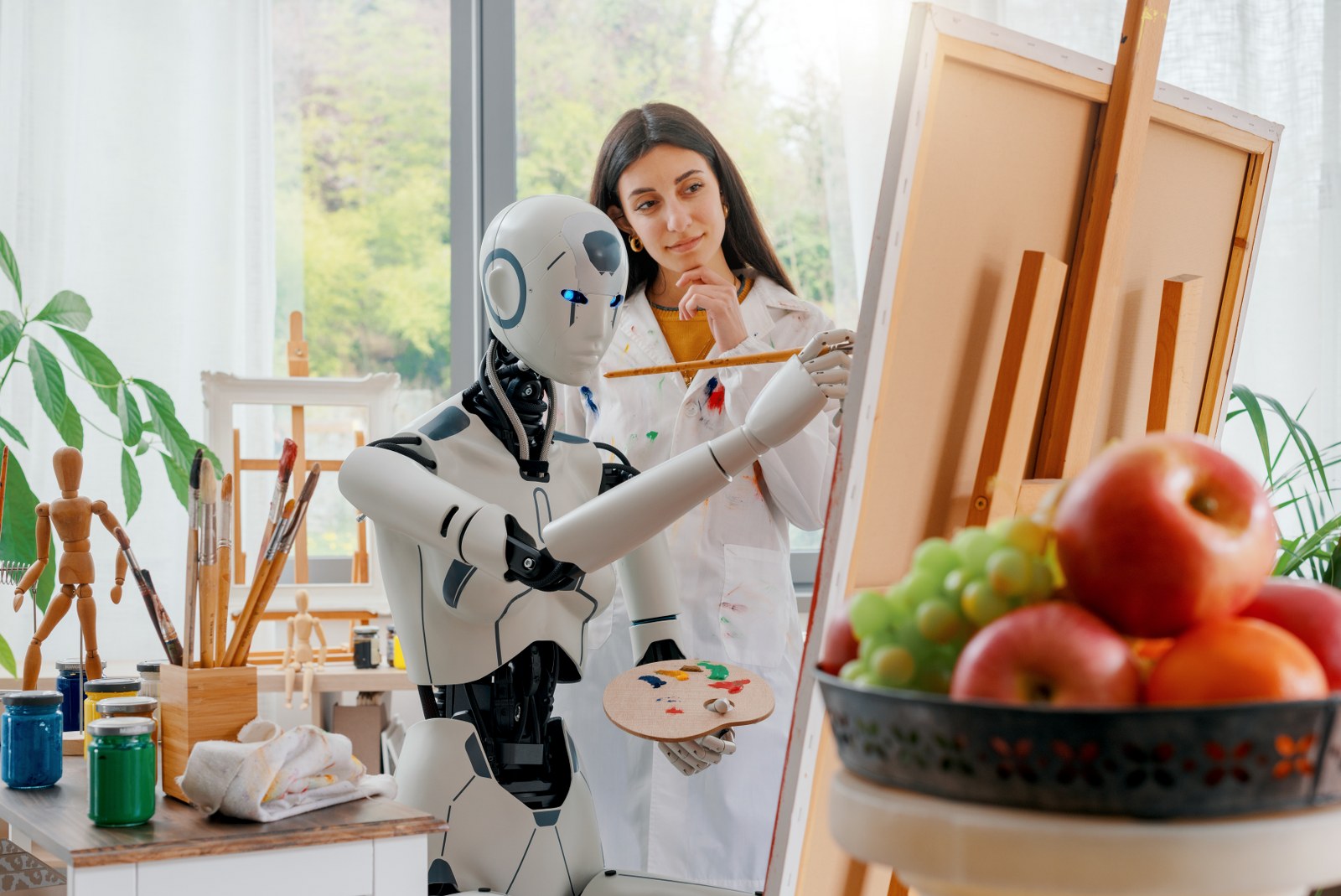
Furthermore, the role of AI must be that of a tool, not an autonomous creator. Human editors are essential to act as ethical gatekeepers, rigorously fact-checking AI-generated content, auditing it for hidden biases embedded in the training data, and ensuring it aligns with the brand's values and the truth before it is ever published.
The perils of over-reliance
As we mentioned before, the primary danger for brands that overuse AI video generation is a profound erosion of their identity and audience connection. An over-reliance on AI inevitably leads to a homogenized aesthetic, as the technology often draws from the same common data pools, causing distinct brands to visually blend into a generic, AI-generated look. Even now we can see examples of this across various platforms. This sameness fails to capture the unique human spirit and authentic storytelling that builds lasting brand loyalty. Moreover, without careful human curation, AI can inadvertently produce content that is culturally insensitive, factually inaccurate, or completely out of step with current events, leading to public relations crises and a loss of hard-earned credibility.

Navigating misinformation and intellectual property
Beyond brand damage, the irresponsible use of AI video generation carries significant societal risks, particularly in the realm of journalism. The technology's ability to create highly realistic "deepfakes" makes it a potent tool for creating deceptive content that can harm individuals, manipulate public opinion, and undermine trust in institutions. Ethically, brands must pledge not to use AI for such deceptive purposes. They must also navigate the unsettled landscape of intellectual property, ensuring they have the rights to the data and imagery used in their AI models to avoid infringing upon the creative work of others, thereby respecting the broader ecosystem of artists and creators.
Final thoughts
So, are AI-generated videos a fleeting hype or the new content engine? The answer is neither and both. The true potential of AI video isn't about total automation. Instead, it's about powerful augmentation. When used strategically, AI becomes a remarkable engine for scalability, efficiency, and creative experimentation, turning lengthy processes into moments and unlocking new ways to repurpose and personalize content. However, treating it as a complete replacement for human creativity leads to generic, soulless content that erodes brand trust and audience connection. The future belongs to a collaborative model where human strategy, storytelling, and ethical oversight guide AI's capabilities to produce work that is both impactful and authentic. The question is no longer if you should use AI in video creation, but how you will harness it to tell your story. Luckily, StorifyMe is here to help you out. Head on to our website for a free demo.
